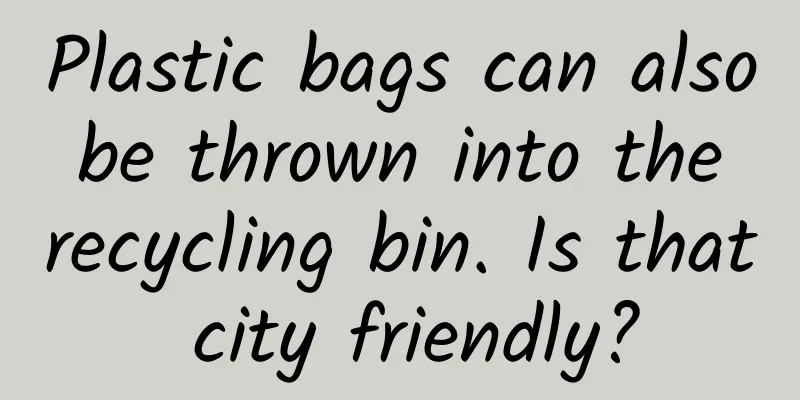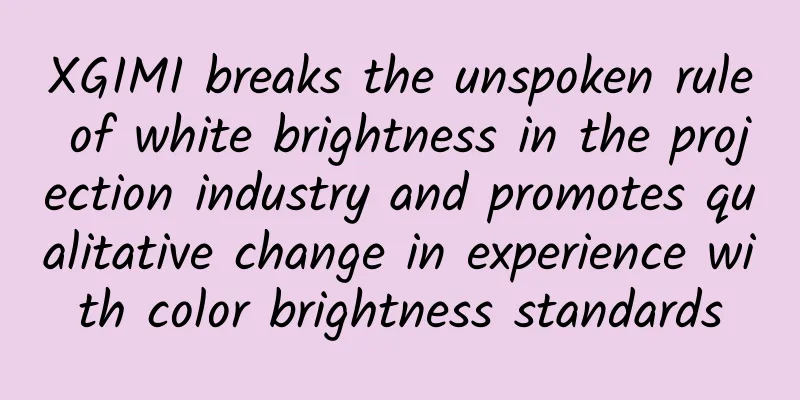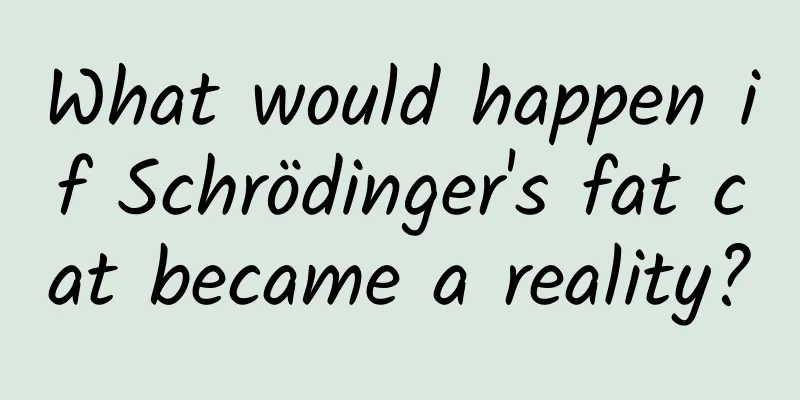Plastic bags can also be thrown into the recycling bin. Is that city friendly?

|
Have you ever paid attention to the plastics you use in your daily life? How much plastic waste do you think each person produces per month? Dozens or hundreds of pieces? How much of this plastic waste can be recycled? And how much is actually recycled? Take a look at the following plastic wastes, which ones do you think can be recycled? In order to gain a deeper understanding of the sources of plastic waste in daily life and reduce unnecessary plastic use, the editorial department launched an activity to pay attention to and record daily plastic consumption. One month later, the answer my colleague got was: 233 . Check-in log from the author According to recorded data, the main sources of daily plastic consumption (78.5%) are food/commodity packaging, shopping bags, and express packaging , and they have a common name - " plastic flexible packaging ." It seems that this guy is a "hard bone" in our daily plastic waste. To chew it, we need to know ourselves and the enemy. A versatile player in the packaging industry and a regular resident of the garbage dump Flexible packaging , also known as soft packaging , as the name suggests, refers to packaging that changes shape after the contents are put in or taken out. It is often made of softer materials such as paper, plastic film, aluminum foil or cloth, either alone or in combination. Plastic flexible packaging is a kind of film packaging made of plastic as the main raw material, such as various bags, sleeves, and envelopes. It can be seen everywhere in daily life and is simply an "old acquaintance" of ours. It comes in various shapes and sizes and often packs a variety of products, such as potato chips, coffee, laundry detergent, cat litter, toothpaste, etc. Many products with plastic flexible packaging can be found in supermarkets. The corresponding one is " hard packaging ", also known as rigid packaging , which refers to packaging made of rigid materials such as plastic, glass, metal, etc. This type of packaging can maintain a fixed shape and is not easily deformed under pressure. It is widely used in the packaging of beverages, shampoos, canned foods, cosmetics, medicines, etc. Many rigid packaging products can also be found in supermarkets. Compared with hard packaging, soft packaging is not only light and easy to carry , but also can fit the shape of the product closely, reducing transportation costs . In particular, plastic flexible packaging has strong sealing properties and can ensure the freshness and safety of the items contained. In addition, it can also present a variety of graphics and appearances in design, helping brands to create a unique image and attract consumers' attention. Therefore, plastic flexible packaging can meet the packaging needs of different products and can be called a versatile packaging industry. But at the same time, it has also become a permanent resident of the garbage dump . Colorful plastic bags are permanent residents of garbage dumps | Unsplash The German Agency for International Cooperation (GIZ) has conducted a survey in cooperation with several institutions. The results of its analysis of the composition of domestic waste in typical Chinese cities show that there is a large amount of plastic waste in other waste entering the waste incineration plant, of which soft plastics account for more than 60% and hard plastics account for less than 40%. More than 40% of the soft plastic waste comes from garbage bags, vest bags, roll bags and shopping bags . If classified by use, more than 90% of the plastic waste generated by residents is various types of packaging, among which the higher proportions are various bags (43%), food packaging (20%) and express packaging (17%). Typical plastic waste from domestic sources in Chinese cities丨GIZ Suzhou domestic soft plastic waste chemical recycling project report The plastic consumption in our daily life is mainly food/commodity packaging, shopping bags, and express packaging. Where do these commonly used plastic soft packaging end up after being discarded? Can they be recycled and properly disposed of? The road to recycling is full of difficulties It is reported that the recycling rate of waste plastics in China has reached 31% . The recycling rate of household plastic soft packaging is about 8.7% . The comparison shows that in the specific field of household plastic soft packaging, recycling faces more challenges . From production design to use, disposal and other links, recycling has set many problems. Production Design Many plastic flexible packaging is not just plastic. In order to pursue perfect appearance and function, it is often made of multi-layer composite materials during production and design. For example, the fashion industry's "layering" masters stack plastic with aluminum foil or paper, and these materials are difficult to be effectively separated during the recycling process. Common potato chip bags and instant coffee bags often use plastic and aluminum foil to enhance the barrier properties in order to meet the requirements of oxygen barrier, moisture resistance, light protection, oil resistance, fragrance preservation, scratch-resistant appearance, bright colors, and low cost. Some tablets or capsules are also packaged in blister packs, which are usually a composite structure of plastic and aluminum foil. One of the multi-layer composite structures *The picture is only an example, there are many other composite structures In addition, in order to improve the barrier properties and aesthetics of the packaging, a variety of chemicals may be added during the production process , which is like applying a layer of difficult-to-remove "makeup" to the plastic flexible packaging, affecting the regeneration performance of the plastic after recycling . In addition, many plastic flexible packaging are designed for single use . This "short life" of being discarded after use means that the complexity and cost of recycling and reuse are greatly increased, creating tremendous pressure for recycling and reuse. After use In life, most people do not know exactly that plastic flexible packaging can actually be recycled, nor do they know how to best dispose of used flexible packaging. In order to maximize the use of these packages and extend their "lifespan", the most common idea is to keep the uncontaminated bags and continue to use them as garbage bags. Which Chinese family has not hoarded plastic bags? After use, plastic flexible packaging may be contaminated with food residues, grease or other various pollutants , and it needs to be thoroughly cleaned during recycling to improve the quality of recycled plastics. And packaging that is severely damaged after use may not be able to pass the automatic sorting system, making it difficult to be processed during the recycling process. After Abandonment Not all plastic flexible packaging is recycled after being discarded. Packaging waste that is thrown away carelessly and not collected by the garbage collection system will eventually become uncontrolled garbage in the environment. The original advantage of being light and easy to carry has suddenly become their fatal flaw, and they are scattered everywhere in the natural environment. Trash scattered out of control in the environment | Unsplash When these plastic soft packaging decompose in the natural environment, they will produce tiny plastic fragments and particles, namely microplastics. These microplastics can penetrate into the air, soil and water, and affect the health of organisms through the food chain. Fortunately, in most cases, these used plastic flexible packaging is thrown into the trash. But this does not mean that we have truly embarked on the road of recycling. In most cities, contaminated plastic bags are often classified as "other garbage" and eventually incinerated or landfilled . Although incineration is normally properly handled in an environmentally friendly manner, it still generates carbon emissions and wastes resources. Landfilling also occupies a large amount of land resources, causing environmental pressure. Of course, there are also some plastic soft bags that can be recycled. Have you noticed that in your city , packaging films, supermarket plastic bags, shopping bags, takeaway packaging bags, express plastic packaging and other waste plastics are now collectively referred to as " low-value recyclables " and need to be put into the blue recyclable bins. Notice of the Office of the Leading Group for the Classification of Domestic Waste in Xiamen on the Issuance of the Guidance Catalogue of Low-Value-Added Recyclables in Domestic Waste in Xiamen (First Revised Edition) Plastic soft packaging enters the recycling door What kind of journey will the plastic packages that enter the recyclable trash bin go through after entering the recycling door? Taking Xiamen as an example, the collected plastic soft packages will enter the city’s low-value recyclables sorting center . After the soft packages with recycling value are selected, they can be made into new plastic particles or products. Workers are performing intelligent control operations on the intelligent production line of the Xiamen Low-value Recyclables Sorting Center. Photo by Fujian Daily reporter Chen Min Of course, there are also more innovative regeneration methods for composite film bags with complex materials. For example, material layer stripping technology is like a delicate and efficient "surgical operation". It uses a special process to separate different material layers one by one. In this way, each layer of material can be recycled separately and used to make new products. In addition, you can also try chemical recycling ? The essence of plastic is petroleum. If the plastic in soft plastic packaging can be returned to polymers through chemical recycling, can the life cycle of this waste be completed? Currently, many industry stakeholders are also conducting such attempts. For example, the GIZ pilot project mentioned above has carried out chemical recycling of soft plastics from domestic sources, and the results show that chemical recycling is possible and scalable in solving the problem of soft plastic recycling. What you can do now: Reduce waste at the source and help with recycling The most direct and effective way to alleviate environmental pressure is to reduce the use of plastic flexible packaging . Soft plastic packaging can be "layered" or "simplified" as much as possible. Using a single packaging material can greatly reduce the complexity of the recycling and reuse process while ensuring the necessary functions of the packaging. For example, a certain brand product in the picture below follows the concept of "design for recycling" and currently uses a single polypropylene material packaging film, which can be recycled through specific channels. A brand of biodegradable composite paper packaging won the Wow Food 2024 Best Sustainable Design Award | Product Company Official Website In addition, recycling plastic flexible packaging is also a key measure to reduce environmental pollution and ultimately achieve the recycling of resources. For example, recycled plastic particles can be made into heat shrinkable films , which are widely used in the packaging of beverage bottles, mineral water bottles, and cosmetics. Heat shrink film Converting waste into valuable recycled raw materials can reduce the demand for virgin plastic, thereby reducing energy consumption and carbon emissions in the plastic production process. Back to our lives, each of us can take immediate action to reduce waste at the source, help with recycling, and deal a “critical blow” to plastic pollution. First, just like a chef carefully selects ingredients, you can also be selective when shopping and avoid over-packaged products. You can also bring your own recycling bags when shopping, or buy bulk goods in a "naked" way. If possible, buy less snacks in small packages, and support recycled express packaging, etc. Secondly, you can also be a "packaging detective" and learn to identify which plastic soft packaging can be recycled and try to classify them correctly. Such a casual move is responsible for the environment and respects resources. Make plastic soft packaging recycling a part of your daily life and a very urban thing. Remember, helping all plastics to be "reborn" is also helping the only Earth to "live forever." Share your story about plastic flexible packaging recycling in your city in the comments section! Author: Li Zilin Editor: Mai Mai This article was republished by the German Agency for International Cooperation (GIZ) Supported by the EU-China Cooperation Project on Enabling Recycling Value Chain This article comes from GuokrNature (ID: GuokrNature) |
>>: To study whether hippos run fast, scientists specifically studied their gait
Recommend
A spider "resurrected from the dead" and turned into a claw machine in seconds? This study is a bit "weird and interesting"
A dead spider slowly descends, and then, suddenly...
Beauty content marketing trends on Tik Tok, Kuaishou, and Xiaohongshu!
During Q2 2020, what new trends are there in cont...
Do you know how to ask Handler questions at the elementary, intermediate and advanced levels?
Handler is a message processing mechanism in Andr...
Logitech launches new keyboard Keys-To-Go with support for Android/Win
Logitech has always performed very well in the fi...
8 Marketing Rules for Brand Content Marketing
New media marketing methods are not WeChat , Weib...
User Operation | How to do user behavior path analysis?
User behavior path analysis is a type of data ana...
Internet advertising measures are implemented, 70 pages of PPT analysis to teach you how to deal with them!
As an emerging advertising medium, Internet adver...
Analyze ten product details to see how big manufacturers design!
Preface Meeting user needs and improving user exp...
New Channel Observation: Porsche's delivery volume in the Chinese market from January to February 2025 was only 5,545 units, a year-on-year decline of 41%.
According to the insurance data compiled by new c...
Mini Program Development Custom Components
Dongguan applet develops custom components, creat...
Android performance optimization: rendering
Google recently released an online course on Andr...
Will artificial starch advance the progress of human civilization?
After six years of exploration, the research team...
620 light-years away, astronomers have directly proved for the first time: the presence of iron in the atmosphere of an exoplanet
[Mobile software: Bo Ke Yuan] An international re...
What are the functions of the flower group buying mini program? How much does it cost to develop a flower shop mini program?
Every time a festival comes, many people will buy...
From the Universe to the Earth: The Wonderful Application of the Rare and Precious Element Helium in Earth Science (Author: Li Zhongping)
introduction In daily life, most people may pay l...








![Public account big V [Understand the leading stocks] Fupange column group + course](/upload/images/67cc042a22392.webp)
